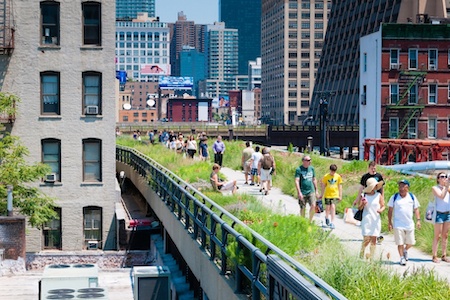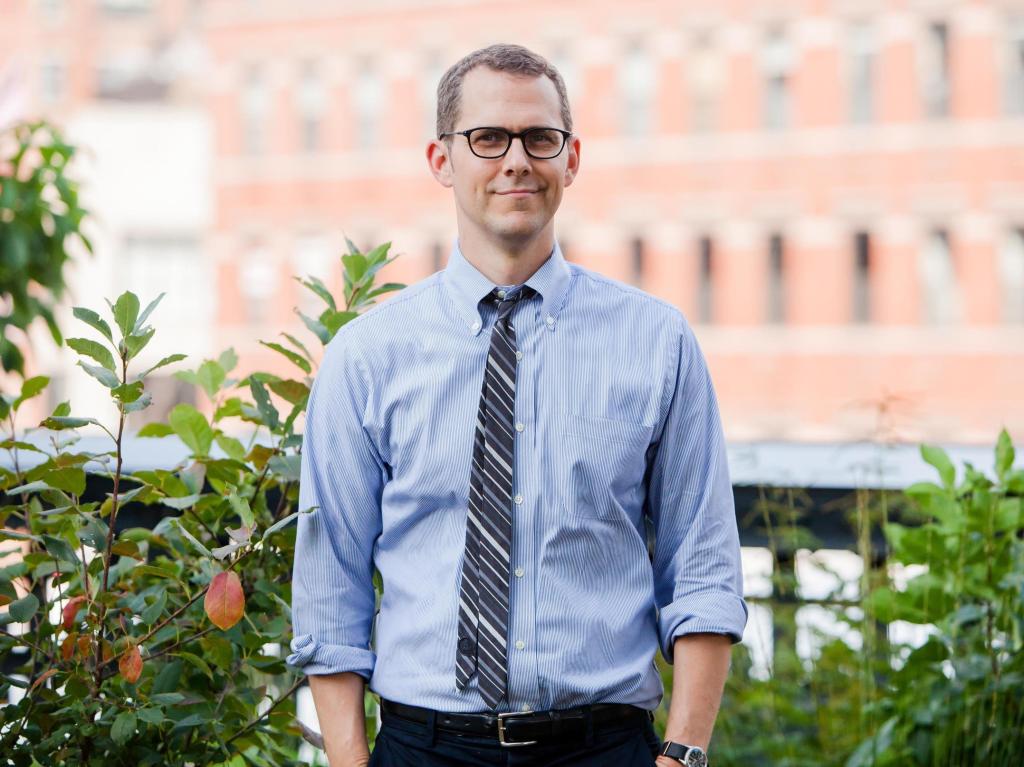Robert Hammond will join some of the world’s leading cultural entrepreneurs as a keynote speaker at REMIX Summit Sydney this April.
Co-founder of the High Line in New York — an elevated park on an abandoned railway line in Manhattan — Hammond will share his insights on the nexus of culture, technology, and entrepreneurship.
Use promo code artshub30 to get 30% off tickets to REMIX Summit Sydney.
In the lead up to Remix Summit Sydney, we asked Hammond about his experience re-imagining a New York space that was once to be demolished, and what it’s like to start a project of this magnitude with ‘no plan, no money, and no experience’. Here’s what he had to say.
Q: In a nutshell, what is the High Line and how did it re-imagine New York’s urban spaces?
A: I think the High Line has always wanted to be more than a park. It’s a public space where you can view art, walk through gardens, experience a performance, savour delicious food, or just connect with friends and neighbours while enjoying a unique perspective of the city.
I lived in the neighbourhood so I had always seen the abandoned elevated freight line when walking around, but I didn’t really realise how it was all connected. I really didn’t think that much about it at all until I read an article in The New York Times in the summer of ’99 that said it was threatened with demolition, and it included a map. The article showed that it was a mile and a half long running through the Meatpacking District and Chelsea, all the way up to Hell’s Kitchen near the Javits Convention Center. That’s when I first realised the whole extent of it.
I assumed someone would be working to preserve it. I called around and thought the American Institute of Architects or the Municipal Arts Society would be working on this. So many things in New York have preservation groups attached to them. But pretty quickly I found no one was doing anything for the High Line and that it was actually going to be demolished. I heard the proposed demolition was on the agenda for a community board meeting in my neighbourhood so I went to my first community board meeting ever and sat next to Joshua David, who I didn’t know at the time.
By the end of the meeting we realised everyone in the room was in favour of demolition except for us. So we exchanged business cards and we said, “Well why don’t we start something together?”

The High Line, New York City. Image supplied.
Q: It’s been called everything from ‘an icon of contemporary landscape architecture’ to ‘tourist-clogged catwalk’, how do you describe the High Line to someone who has never seen it?
A: One of the things that I think is great about the High Line is that it’s different things to so many people. Some people might see it as a part of the city, some might see it as an escape, some might see it as everything they like about the city, some might think it’s everything they might not like. That’s all a part of what it is, and the experience that people have even if they’ve visited us or not.
Q: How did you bring together a large collaborative project like the High Line?
A: I always start my talk by emphasising that when Joshua and I decided to try to create this project, we had ‘no plan, no money, and no experience’.
Josh and I get a lot of credit for this great strategy. I think the most important thing we did was start the project, and it allowed other people to come along and help us get it done. In some ways, it was an asset that neither Josh nor I was an architect, landscape architect, or city planner. It forced us to basically go to other people for help, and we were also able to focus on feedback from the community and neighbourhood.
Talking to people who are interested in starting their own kind of project too, that’s always the point I try to make: The most important thing that someone can do is just start something. That enables other people to come along and help them get it done.
People always ask me, ‘What was the one most critical time or event?’ There wasn’t. The project had so many different pieces — the community and neighbourhood, the political, the economic, real estate — that there wasn’t one specific thing that made a difference. There were a whole bunch of different things.
Q: What’s the most exciting aspect of cultural entrepreneurship right now?
A: I think that these kinds of projects help create great economic, cultural, and community value, but not everyone gets to share this all equally. That’s what the majority of projects are focused on right now, creating equity in public space. How can you be successful in creating space where everyone will feel like: you are welcome, and that you can see a benefit from its existence.
Q: How do you measure the success of the High Line?
A: I have my own personal goals for the High Line. One is that it’s a well-loved park by New Yorkers; Two is that it gets better and better; and Three (and most importantly) is that it inspires other people to start these kind of things — not just elevated rail lines, but any kind of project.
I really hope that people can be encouraged to make a difference in their communities. You don’t have to have experience, you don’t have to have all the money, you don’t have to have the plans all set. We developed all those things over time. That’s what stymies a lot of people. They think, ‘Oh, I don’t have the experience,’ or, ‘I don’t have the money.’ Those things can come.
Q: What inspires you to keep going when you meet challenges?
A: I think just the experience of tackling the problems we currently face in creating projects like the High Line. Sharing our success is a big part, but also we have a responsibility to share what hasn’t worked. I hope that will help other projects improve even more on what we started.
Q: What are you looking forward to at Remix in Sydney this year?
A: I’m really looking forward to my visit, having a chance to hear from experts, and learning about other projects from all over the world. It will be an incredible experience, and I’m excited to be a part of it.
To find out more about REMIX Sydney visit remixsummits.com/syd
Use promo code artshub30 to get 30% off tickets to REMIX Summit Sydney.





